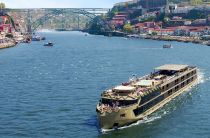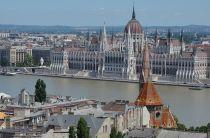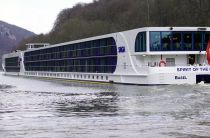Kinderdijk (Netherlands South Holland)
Cruise Port schedule, live map, terminals, news
Region
Europe Rivers
Local Time
2025-04-04 04:34
 50°F
50°F 10°C

 Light breeze
Light breeze2.7 m/s
 69 °F / 21 °C
69 °F / 21 °C 49 °F / 10 °C
Port Kinderdijk cruise ship schedule shows timetable calendars of all arrival and departure dates by month. The port's schedule lists all ships (in links) with cruises going to or leaving from Kinderdijk, Netherlands South Holland. To see the full itineraries (ports of call dates and arrival / departure times) and their lowest rates – just follow the corresponding ship-link.
| Day | Ship | Arrival | Departure |
|---|---|---|---|
| 3 April, 2025 Thursday | |||
| 3 April, 2025 Thursday | |||
| 4 April, 2025 Friday | |||
| 5 April, 2025 Saturday | |||
| 5 April, 2025 Saturday | |||
| 7 April, 2025 Monday | |||
| 7 April, 2025 Monday | |||
| 7 April, 2025 Monday | |||
| 7 April, 2025 Monday | |||
| 8 April, 2025 Tuesday | |||
| 9 April, 2025 Wednesday | |||
| 11 April, 2025 Friday | |||
| 12 April, 2025 Saturday | |||
| 13 April, 2025 Sunday | |||
| 13 April, 2025 Sunday | |||
| 13 April, 2025 Sunday | |||
| 13 April, 2025 Sunday | |||
| 14 April, 2025 Monday | |||
| 15 April, 2025 Tuesday | |||
| 15 April, 2025 Tuesday | |||
| 16 April, 2025 Wednesday | |||
| 16 April, 2025 Wednesday | |||
| 16 April, 2025 Wednesday | |||
| 17 April, 2025 Thursday | |||
| 17 April, 2025 Thursday | |||
| 17 April, 2025 Thursday | |||
| 18 April, 2025 Friday | |||
| 18 April, 2025 Friday | |||
| 19 April, 2025 Saturday | |||
| 20 April, 2025 Sunday | |||
| 20 April, 2025 Sunday | |||
| 22 April, 2025 Tuesday | |||
| 23 April, 2025 Wednesday | |||
| 23 April, 2025 Wednesday | |||
| 23 April, 2025 Wednesday | |||
| 23 April, 2025 Wednesday | |||
| 24 April, 2025 Thursday | |||
| 24 April, 2025 Thursday | |||
| 25 April, 2025 Friday | |||
| 25 April, 2025 Friday | |||
| 25 April, 2025 Friday | |||
| 25 April, 2025 Friday | |||
| 26 April, 2025 Saturday | |||
| 26 April, 2025 Saturday | |||
| 27 April, 2025 Sunday | |||
| 27 April, 2025 Sunday | |||
| 29 April, 2025 Tuesday |
Kinderdijk is a cruise port located at the confluence of rivers Lek and Noord in the Netherlands South Holland province (Molenwaard municipality). It is approx 15 km (9 mi) east of Rotterdam. A system of 19 windmills was built in 1740 to drain the polder (Alblasserwaard). These authentic windmills are among the best-known tourist attractions in Holland, and since 1997 are designated UNESCO Site.
In this polder, problems with water drainage became more serious in the 13th century. Then large canals had to be dug to drain out the excess water from the land and in the polders. Later was decided to be build a series of windmills to pump the excess water into a reservoir at an intermediate level between the polder and the river. Although some of these 3 centuries-old windmills are still used, the main waterworks are provided by diesel pumping stations.
- Cruise Industry

Adventures by Disney expands family travel with Holland and Belgium river cruises
Adventures by Disney continues its dedication to family-oriented travel with the introduction of two new voyages to Holland and Belgium. Commencing...
February 9, 2024 - Cruise Industry

Adventures by Disney unveils new river cruises in Holland and Belgium for 2025
Adventures by Disney is launching two new river cruise routes in Holland and Belgium in April 2025. One itinerary focuses on traditional sights like...
January 14, 2024 - Cruise Industry

Emerald Cruises announces 2024 Europe river cruise collection
Emerald Cruises unveiled its 2024 Europe river cruise collection, which includes a selection of Epic Voyages. The program features multi-river...
March 14, 2023 - Cruise Industry

Saga’s new riverboats Spirit of the Danube & Spirit of the Rhine to have a joint naming ceremony on...
Saga Cruises' new sistership riverboats Spirit of the Danube and Spirit of the Rhine are set to welcome Captain George Dudunica and Captain Marinus...
February 22, 2022 - Cruise Industry

Damen to build 9 green ferries for Aqualiner-Swets
Joint venture Aqualiner-Swets contracted Damen Shipyards to build 9 new passenger ferries, which are due to provide a public transport service...
November 4, 2020 - show more news
